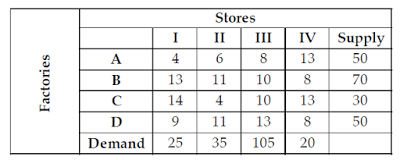Welcome to the Data Structures and Algorithms MCQs Page
Dive deep into the fascinating world of Data Structures and Algorithms with our comprehensive set of Multiple-Choice Questions (MCQs). This page is dedicated to exploring the fundamental concepts and intricacies of Data Structures and Algorithms, a crucial aspect of UGC CBSE NET Exam. In this section, you will encounter a diverse range of MCQs that cover various aspects of Data Structures and Algorithms, from the basic principles to advanced topics. Each question is thoughtfully crafted to challenge your knowledge and deepen your understanding of this critical subcategory within UGC CBSE NET Exam.
Check out the MCQs below to embark on an enriching journey through Data Structures and Algorithms. Test your knowledge, expand your horizons, and solidify your grasp on this vital area of UGC CBSE NET Exam.
Note: Each MCQ comes with multiple answer choices. Select the most appropriate option and test your understanding of Data Structures and Algorithms. You can click on an option to test your knowledge before viewing the solution for a MCQ. Happy learning!
Data Structures and Algorithms MCQs | Page 11 of 27
Explore more Topics under UGC CBSE NET Exam
List - I List - II
(a) Polymorphism (i) Picking both operator and attributes with
operations appropriate to model an object
(b) Inheritance (ii) Hiding implementation details of methods
from users of objects
(c) Encapsulation (iii) Using similar operations to do similar things
(d) Abstraction (iv) Create new classes from existing class
Codes :
(a) (b) (c) (d)
(a) A class can inherit only one Abstract class but may inherit several interfaces.
(b) An Abstract class can provide complete and default code but an interface has no code.
(a) The solution must be feasible, i.e. it must satisfy all the supply and demand constraints.
(b) The number of positive allocations must be equal to m+n-1, where m is the number
of rows and n is the number of columns.
(c) All the positive allocations must be in independent positions.
The initial solution of a transportation problem is said to be non-degenerate basic feasible solution if it satisfies :

List-I List-II
a. Classification i. Principal Component Analysis
b. Clustering ii. Branch and Bound
c. Feature Extraction iii. K-nearest neighbour
d. Feature Selection iv. K-means
Codes:
a b c d
Suggested Topics
Are you eager to expand your knowledge beyond Data Structures and Algorithms? We've curated a selection of related categories that you might find intriguing.
Click on the categories below to discover a wealth of MCQs and enrich your understanding of Computer Science. Happy exploring!








